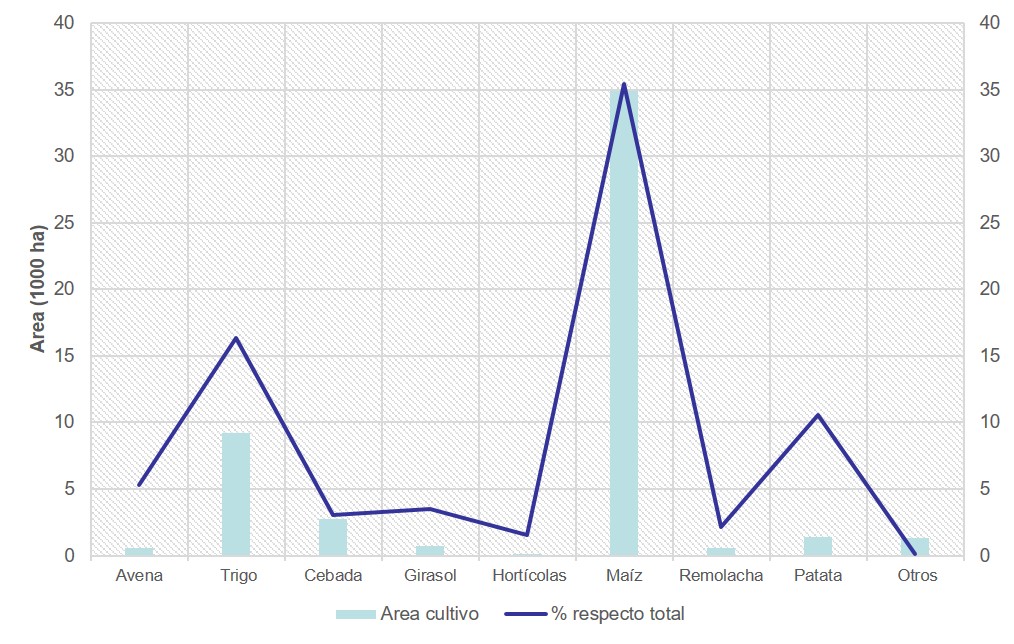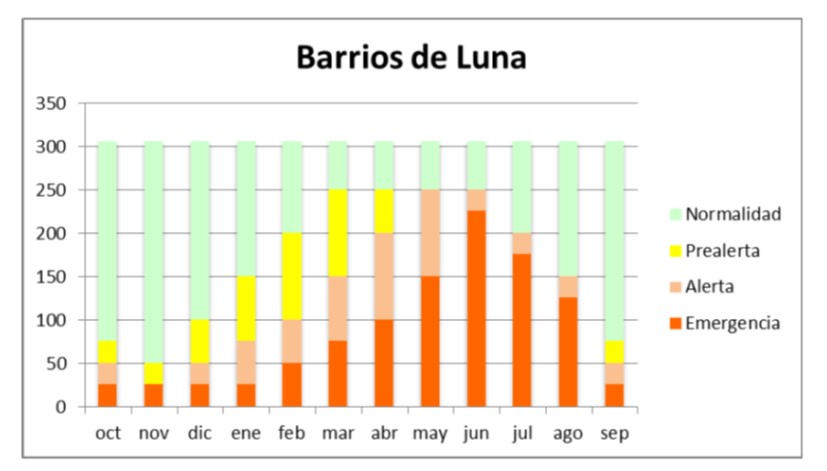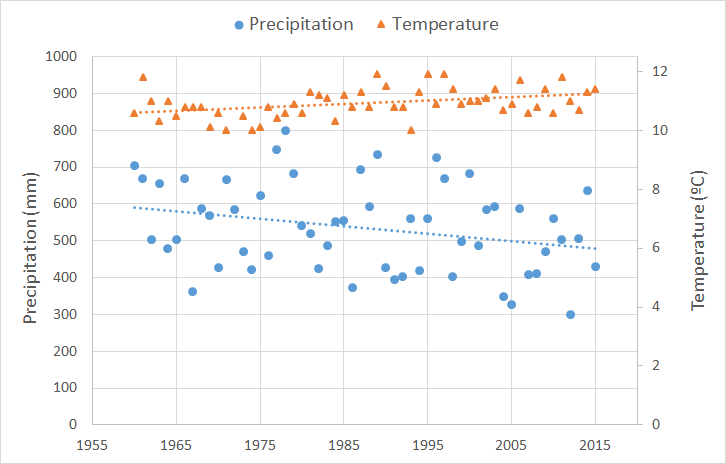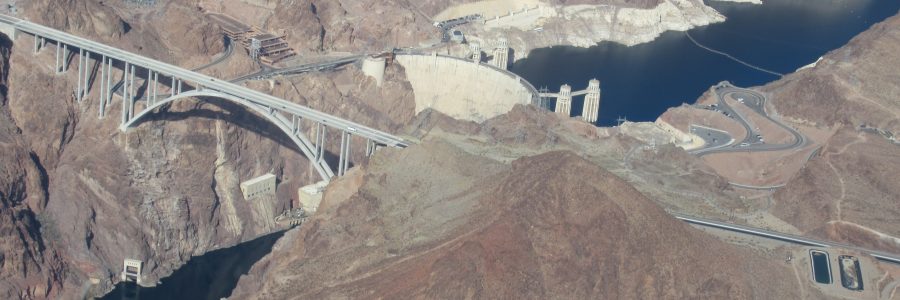Drought conditions are increasingly common in Spain and many other countries. Current Climate Change scenarios also suggest a significant drought reinforcement in several areas of the world. Irrigation restrictions and other negative impacts on agriculture can be expected.
Droughts reduce the reservoirs capacity and cause irrigation restrictions, due to lower water availability.
Scarcity of water for irrigation is an almost chronic problem in areas such as the Segura basin, in South East Spain.
However, in the wet northern Spanish regions such as Douro basin, irrigation restrictions are foreseen for 2017-2018. This is especially serious in Leon province.

Orbigo Zone, in Leon province, would be very affected in case of irrigation restrictions. The Orbigo irrigation water depends on the reservoirs of Barrios de Luna (85%) and Villameca (15%).
The agricultural area of the Orbigo system means only 4.5% of the total agricultural area of the Duero Hydrographic Confederation (CHD). However, this area contributes 16% of the total irrigation of the CHD.
The Orbigo zone accounts for 35% of all maize cropped in the CHD area. Maize is a crop with high irrigation demands. In addition, the area of maize in the Orbigo zone has increased fourfold in recent years. Irrigated wheat and potato are also important. It means 16 and 10% of total CHD area for these crops.
The Orbigo zone and the irrigation restrictions

According to the CHD historical data, the Barrios de Luna dam faces a clear risk of water capacity shortages.
The last Duero Hydrological Plan recommends irrigation restrictions in the alert and emergency phases.
The plan suggests to reduce the irrigation endowments and the river’s ecological flow under drought conditions, among other measures.
Average annual temperatures increase and total annual rainfall decreases in Leon since 1960
This behaviour agrees with existing climate projections. Temperatures are expected to continue to rise and average precipitation will decline over the next century.
Less rainfall in the area means less recharge of the Barrios de Luna reservoir and other reservoirs in the area. Higher temperatures cause an increase in evapotranspiration and water needs of crops.

Orbigo-zone irrigators face an obvious risk of medium- and long-term irrigation restrictions. Climate trends and historical series in the region make this clear.
What can be done to reduce the impact of these restrictions?
There are several simple adaptation measures to the likely irrigation restrictions that local farmers might consider. Reducing the maize area, for instance. However, this could be inconvenient from the economic point of view.
The best solution could be to obtain ISO 22301 certifications. It means a complete risk analysis, based on climatic projections and hydrological models. The analysis might be conducted with available simulation tools, such as FREEWAT, which is linked to a Geographic Information System. The analysis would provide estimates of reservoir recharge and the likelihood of irrigation restrictions for the rest of the century. The irrigators could develop a Risk Plan, with the appropriate measures for each case. However, this modelling-based analysis could be complicated and costly.
A simpler risk analysis could be conducted considering only meteorological historical data, especially precipitation variability. Using a time generator, the probability of irrigation restrictions could be estimated from precipitation behaviour. Seasonal forecasts could also adjust the probability for the coming months. Having an estimate of irrigation restrictions probability, several alternative solutions can be evaluated. These adaptation solutions could come from crop models. Especially, best solutions could come simulating the effects of different irrigation schedules.
One of these solutions is to adapt available water to the critical crop needs, rather than satisfying the whole crop water requirements. This is known as “deficit irrigation“. The deficit irrigation schedule could be obtained from simulations. Another solution would be to hire agricultural insurance, if the probability of irrigation restrictions indicates potential losses higher than the insurance cost. However, such calculation should be done.
There are several actions to be taken by farmers, which allow them to increase resilience to the risk of irrigation restrictions, due to lack of water in the reservoirs. Current climate and simulation tools, used in the framework of ISO 22301 procedures, can help them to make the most economically sound decision.

